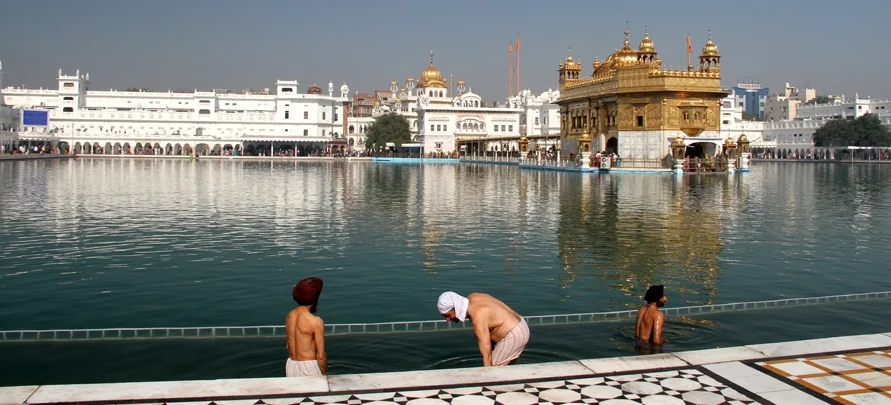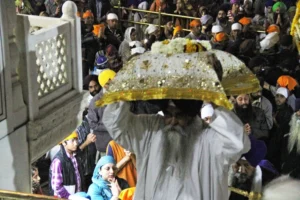Amritsar
Amritsar, literally ‘a pool of nectar’, was founded by the fourth Guru of Sikhs, Guru Ram Das (1534 – 1581), who had initially constructed a pool here. Though most known because of its famous gurudwara, The Golden Temple, it is also believed to be the site where Sage Valmiki wrote the epic, Ramayana. According to popular belief, Rama and Sita had spent a brief period of their 14 year exile here.

Harmandir Sahib, or, as it known the world over, The Golden Temple enshrines the Holy Book of the Sikhs, the Guru Granth Sahib, is located in Amritsar. The Harmindir Sahib today stands as the hallowed symbol of the indestructability of the Sikh faith. The fifth guru, the son and successor of Guru Ramdas, Guru Arjun Dev (1563 – 1606) invited Mian Mir, a Muslim saint to lay the foundation stone for Harmindar Sahib, and construction of the temple was completed in the late sixteenth century. He designed it to have four doors, one on each side. The Golden Temple, would thus be open to all four castes-Kshatriyas, Brahmins, Sudras & Vaisyas. The gilding, marble, mirror and inlay work on the Harmandir Sahib came much later. It was the nineteenth century during the reign of Maharaja Ranjit Singh, that the proud people of Punjab lavished their wealth on their shrine in Amritsar.
 The Golden Temple is a two story marble structure, with an imposing dome of pure gold. The architecture of the Golden Temple, is a blend of Hindu and Muslim styles. The golden dome is meant to represent an inverted lotus flower. The interior of the temple is decorated with semi precious stones, frescoes and glass work.
The Golden Temple is a two story marble structure, with an imposing dome of pure gold. The architecture of the Golden Temple, is a blend of Hindu and Muslim styles. The golden dome is meant to represent an inverted lotus flower. The interior of the temple is decorated with semi precious stones, frescoes and glass work.
The Akal Takht, or immortal throne, established by the sixth Sikh Guru, Guru Hargobind (1595 -1644), is the supreme seat of Sikh religious authority, and is also the repository of ancient weapons, used by the Sikh warriors and Gurus. The Granth Sahib, the holy book of the Sikhs, was installed in the Harmandir Sahib in 1604, three years after its completion. The location of the Granth Sahib here, adds to the sanctity & reverence of the Harmandir Sahib. Here lies the heart of Sikhism. This symbol of abiding faith and tolerance is held in high esteem by every Sikh. And this is the place which every Sikh dreams, ever so often, of visiting. Visit the infamous Jallianwala Bagh – now a national monument, where in 1919, during the British Raj, Gen. Dyer massacred men, women and children pilgrims by opening fire on them. Also visit the beautiful Rambagh Gardens.
Plan your visit so you get to the Golden Temple before dawn and be a part of the procession to bring the Granth Sahib into Harmindar Sahib. Then stay have Langar or go back to your hotel for breakfast and continue sightseeing of this historic city.
All photographs on this page, courtesy David Peterson.
Your visit is TOTALLY incomplete if you do not eat at the “Langar” within the Gurudwara.
